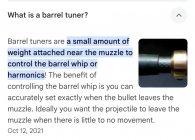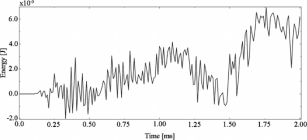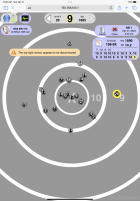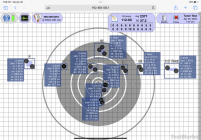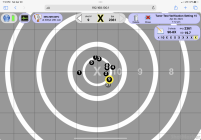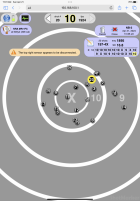I'll say this regarding wider tune windows. I do believe having a weight on the end makes a small difference, widening the window ever so slightly. But I've seen what the bbl looks like when fired on an o-scope and it's ugly. The areas at top and bottom of the sine wave are narrow, to put it mildly at best. So, while the distance between sweet spots certainly changes with frequency, the width of that little peak where we want bullet exit to happen is not wide at all. So, very generously and hypothetically speaking only, say we cut the frequency in half. That does not mean our tune window is twice as wide and even if it did, well, twice of a razor's edge is still pretty slim and that's kinda what we're up against here. So, I wouldn't hang my hat on that wider tune window but ever so slightly, yes, it's wider. I think, and my method of using a tuner, is a better way. I don't even pay much attention to how wide or narrow it is any more. I just move the tuner and it goes back to shooting. That's ME, but do what works for you.
To me, THAT is the benefit of a tuner.
Just for a visual aide in what I'm saying, lets look at this pic. Looks to me like the top of the natural curve, where I prefer bullet exit to occur is at the peak around 1.75ms. Forget about all those other spike and all the other stuff going on and just use this for a mental image. See how narrow it is? Even if we tune elswhere, same thing again. Don't read too much into this. I'm just trying to make a point is all. Actually, the next peak "might" be better after looking at it for a second but still. See how there are big sweeping wave forms and little tiny ones. To see the big ones, imagine drawing a curved line through the middle of that entire picture, following the "sine". That's close to what I'll refer to as the natural frequency(among many at once) Problem is, I believe we are tuning to the little bitty spikes...Now, imagine a vertical line running thru the wave form at the highest point(about 1.75ms) in the pic for a second. Lets call that vert line "bullet exit." Now the good part...we shift that single little bitty wave form left or right with a tuner(phase shift). We shift the bullet exit with powder or other tuning means. See how and why both methods affect group shape and size similarly? One way speeds the bullet up and the other way speeds the bbl up but ideally, either method puts us on top of that same tiny little wave form.
I robbed this pic and it's just for reference here so lets not hash out details.
Based on my testing, this is the best way I know to explain what I believe is going on. We can agree or disagree but lets just not argue or turn this thread into a cluster. This is how I see it. You may see it differently and that's ok with me. Damn few have seen this in person and I have.. and watched it move the wave form when the tuner is adjusted as well as using calculated bullet exit superimposed over the actual wave form in a lab, so while I'm sure there is a lot more to learn myself, it's more than a theory or guess but again, I'm sure there is more for me to learn in time.
I'd like your thoughts
@CharlieNC
But, it's not worth arguing over. Most people could care less how they work. They just wanna know how to use them to win more!
View attachment 1554626










